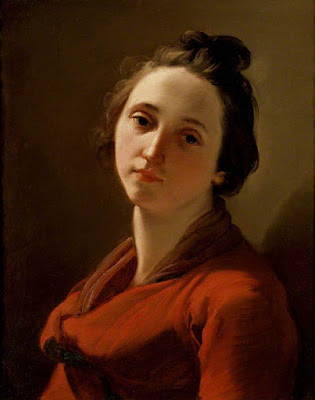 |
| Ubaldo Gandolfi The Visitation 1767 oil on canvas private collection |
 |
| Ubaldo Gandolfi Mercury lulling Argus to Sleep ca. 1770-75 oil on canvas North Carolina Museum of Art, Raleigh |
 |
| Ubaldo Gandolfi Mercury preparing to behead Argus ca. 1770-75 oil on canvas North Carolina Museum of Art, Raleigh |
 |
| Ubaldo Gandolfi Head of a Young Man with a Scarf (character head) before 1781 oil on canvas Museo del Settecento Veneziano, Ca' Rezzonico, Venice |
 |
| Ubaldo Gandolfi Head of a Young Man (character head) before 1781 oil on canvas Museo Civico di Modena |
 |
| Ubaldo Gandolfi Head of a Bearded Man (character head) before 1781 oil on canvas private collection |
 |
| Ubaldo Gandolfi Head of an Old Woman (character head) ca. 1778 oil on canvas Los Angeles County Museum of Art |
 |
| Ubaldo Gandolfi Head of a Young Woman (character head) ca. 1775-78 oil on canvas Ashmolean Museum, Oxford |
 |
| Ubaldo Gandolfi Judith with the Head of Holofernes before 1781 drawing Metropolitan Museum of Art, New York |
 |
| Ubaldo Gandolfi Académie before 1781 drawing Metropolitan Museum of Art, New York |
 |
| Ubaldo Gandolfi Académie before 1781 drawing Metropolitan Museum of Art, New York |
 |
| Ubaldo Gandolfi Académie before 1781 oil on canvas private collection |
 |
| Ubaldo Gandolfi Académie before 1781 oil on canvas private collection |
 |
| Ubaldo Gandolfi Model posed as St Sebastian before 1781 oil on canvas private collection |
 |
| Ubaldo Gandolfi Figure Study for Sleeping Legionary at the Resurrection before 1781 oil on paper, mounted on canvas private collection |
"The art of the Bolognese Gandolfi family – the brothers Ubaldo (1728-1781) and Gaetano (1734-1802) and Gaetano's son Mauro (1764-1834) – has been considered the final flowering (or final decline) of the Bolognese Baroque style, begun almost two centuries earlier by the Carracci family. In spite of admiration for their work, serious investigation into their development and influences has been undertaken only recently. Like other artists of the Bolognese school, the Gandolfi fell into obscurity in the nineteenth century; not until the 1930s did a monograph on their work appear. In the past twenty years or so, research has clarified the artists' œuvres and examined their relationship to each other and to Italian and European artistic movements."
"One cannot discuss the drawings of the Gandolfi without discussing the paintings, and this is as it should be. . . . Ubaldo was the most traditional of the family – the iconographical clarity, compositional austerity, and emotional directness recall Bolognese paintings of the Counter-Reformation, while the innocent sweetness of the characters reminds one of Correggio's pervasive influence in north Italian art. Specific references to the Carracci, Guercino, and Giuseppe Maria Crespi abound. Ubaldo's drawings also depend on his Bolognese predecessors, principally the Carracci. His red chalk sheets, especially his drawings after the nude model, study the natural forms of the human figure, explore the light as it falls on the model, and employ hatching similar to that of the Carracci in the 1580s."
– excerpted from Diane De Grazia's review of Bella Pittura: the Art of the Gandolfi (exhibition catalogue by Mimi Cazort), published in the Summer 1995 issue of Master Drawings